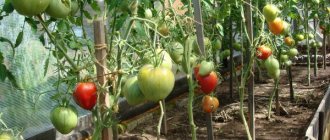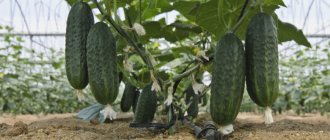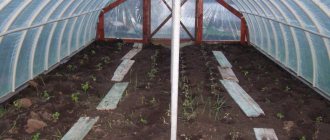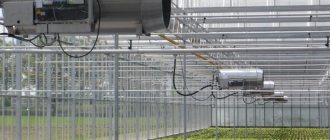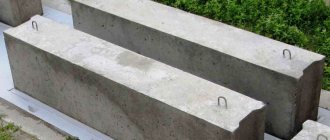The question of choosing a covering material for a greenhouse always worries summer residents. However, many people prefer film. Experts recommend reinforced film for greenhouses, which is considered one of the best covering materials. It is distinguished by high quality and a number of other advantages. At the same time, the material has a low cost, which distinguishes it from similar products.
Photo: https://koffkindom.ru/
Content:
- Reinforced polyethylene film 2x10m 200µm ZZP covering, for greenhouses, greenhouses, light-stabilized, food grade, light transmission 81%, mesh cell 12x12mm
- Reinforced greenhouse film 2x25m 140g/sq.m 200mkr TDStels
- Reinforced greenhouse film 2x50m 120g/sq.m 200mkr TDStels
- Reinforced film 120 MKR - (2X12 M)
- Reinforced greenhouse film 140g/sq.m. (2x50m) 200 microdistrict TDStels
- Reinforced greenhouse film 2x20m 120g/sq.m 200mkr TDStels
- Reinforced film 150 MKR - (2X12 M)
- Reinforced film 400 microns
- Reinforced film 120 g (4x50)
- Reinforced film 100 g (2x25)
- Which reinforced film is best to use for a greenhouse?
Installation
Installation of a reinforced translucent sheet is no different from covering a structure with ordinary greenhouse film. It is also pulled over the frame and secured with staples or nails. For those who listen to our advice, a hint was given above about the method of fastening with clamps.
Some Danish-made films are equipped with special rubber rings for installation, which allows you to avoid making cuts on the film sheet at all. Well done!
Another option for a lightweight film greenhouse
The cellular frame ensures the strength of the fabric, since tensile loads are applied not only to the polyethylene film itself, but also to the propylene threads. This is also convenient in case of accidental damage to the material by the cutting edges of garden tools or simply breaks. The hole will not crawl further than the reinforced mesh cell.
You can repair the film using double-sided butyl rubber tape. Craftsmen blurt out stationery tape - and they turn out to be wrong. This is a bridge of cold. And there is a clear threat of condensation accumulating in the patch area.
Reinforced greenhouse film 2x25m 140g/sq.m 200mkr TDStels
Photo: beru.ru
The product is characterized by flexibility and fairly high elasticity rates, which makes it easy to lay film material with a reinforcing layer on the surface of any relief. The high strength of reinforced material determines the rationality and efficiency of its use. If you are concerned about the question of how to choose reinforced film for greenhouses, then in this case it is the strength of the material that is the determining factor.
Reinforced greenhouse film 2x25m 140g/sq.m 200mkr TDStels
Pros:
- UV resistance
- high strength
- rot resistance
- weather resistance
- environmental friendliness
- creating a microclimate
- possibility of quick repair
- ease of storage
- density 140 g/m2
- guarantee
- certificates
The difference between reinforced polyethylene tape and other covering materials.
One of the common covering materials is ordinary polyethylene film.
Unlike reinforced film, it costs less, but loses in many respects. Such material breaks easily and, as a rule, only lasts one summer cottage/agricultural season (many people try to reuse polyethylene, but its properties inevitably fade over the years). It also does not maintain the temperature regime inside the greenhouse; at night, the air in the greenhouse cools down greatly, which negatively affects the overall microclimate.
If we compare reinforced film with polycarbonate, the latter is not mobile and also not durable (after winter, polycarbonate sheets often begin to crack).
Reinforced greenhouse film 2x50m 120g/sq.m 200mkr TDStels
Photo: beru.ru
Reinforced film is presented on the market by Russian and foreign manufacturers. The product is characterized by high performance and quality properties. In demand as a covering and waterproofing material. Still unsure which reinforced film to choose for greenhouses? We recommend choosing the TDStels product.
Reinforced greenhouse film 2x50m 120g/sq.m 200mkr TDStels
Pros:
- UV resistance
- high strength
- rot resistance
- weather resistance
- environmental friendliness
- creating a microclimate
- possibility of quick repair
- ease of storage
- density 120 g/m2
- guarantee
- certificates
- all types of payment
Technical specifications
The production of reinforced film is regulated by technical specifications (TU 6-49-5761914-287-89). Material characteristics:
| Width | 2 m |
| Blade thickness | 120 g/m² 140 g/m 160 g/m² 200 g/m² |
| Grid cell | 12x12 mm |
| Light transmission | at least 81% |
| Temperature Range | -50°С…+ 60°С |
| Operating period | from 3 years or more |
*Finished products are accompanied by a certificate of conformity and a quality certificate.
Reinforced film 120 MKR - (2X12 M)
Photo: beru.ru
The product is used for installing greenhouses and greenhouses; it is durable and highly durable, which is ensured by its multi-layer structure. In the production of the film, traditional polyethylene is used, as well as a metal reinforcing layer, which increases the wear resistance of the product. Available in transparent and opaque versions. If you are concerned about the question of where to buy reinforced film for a greenhouse, then we recommend placing your bet on the online store beru.ru.
Reinforced film 120 MKR - (2X12 M)
Pros:
- UV resistance
- high strength
- rot resistance
- weather resistance
- possibility of quick repair
- ease of storage
- transparent
- density 120 microns
Film for greenhouses, how to choose - types and properties
A huge product line of films for greenhouses has led to confusion in this segment of products for gardeners and gardeners. How to distinguish where the truly high-quality material with the best characteristics for growing crops is:
- low cost;
- practicality;
- reliability;
- high-quality protection against UV rays.
And where are the machinations of marketers, and what are sellers keeping silent about in an effort to sell goods? To figure out which film to choose for a greenhouse, let’s get acquainted with its main types and properties.
Key characteristics for quality coating
Polyethylene
Polyethylene film for greenhouses is a rolled material, available in different widths from 1.2 to 3 m, it can be single-layer or double-layer as a sleeve, which can be cut along the fold.
If a polyethylene sleeve is cut, the fold should be sealed with tape, this will extend the life of the film.
For greenhouses, it is advisable to buy film 0.1 mm (100 microns) - 0.15 mm (150 microns) thick. Although the thick one will last longer, it will not be suitable for the next season. Polyethylene shelter is the most budget-friendly and popular option, but under the influence of atmospheric influences it quickly wears out and loses its properties. This is a good solution for small greenhouses on a personal plot.
Polyethylene coating - inexpensive, fast, reliable
Reinforced
Reinforced is an improved type of polyethylene, a special frame - 8-12 mm cells, takes on the load and distributes it evenly over the entire surface. The main characteristic is density, since the thickness varies; on the reinforcement it is greater than in the center of the cells. For organizing beds in closed ground, it is suitable with a density of 120-200 g per m2.
The reinforcing frame can be made of different materials:
- polyethylene with special treatment: twisted, elongated, low pressure, monofilament;
- polypropylene;
- fiberglass.
For greenhouses, there is a breathable reinforced film; the effect is achieved thanks to a microscopic hole in the center of the cell.
It is extremely rare with a fiberglass frame and is practically not used in our open spaces. Manufacturers promise that the reinforced version will last at least 3 years. Note that the service life depends more on the climatic conditions in the region; the harsher they are, the faster wear occurs.
Reinforced materials are particularly durable and reliable
Polyvinyl chloride
Polyvinyl chloride film for greenhouses has a significant thickness and, contrary to popular belief and the material, does not rustle. Visually, it resembles the material for medical droppers; the similarity is not accidental, since the material is the same. It has high translucency characteristics, almost 90% - transmits daylight to the maximum and allows you to save on additional lighting. PVC practically does not allow harmful infrared radiation to pass through, no more than 10% gets inside the greenhouse, and ultraviolet access is 80%.
A deterrent to purchasing is the high price and low frost resistance, down to -15°C. Despite significant disadvantages, the material lasts about 3 years, with proper use and in regions with a mild climate, without high wind loads, the service life is 5-7 years.
Dense PVC - reliable protection for crops for a long time
Reinforced greenhouse film 140g/sq.m. (2x50m) 200 microdistrict TDStels
Photo: beru.ru
Reinforced polyethylene film has decent performance qualities. It has high light transmittance, as well as low vapor and moisture permeability. The product is also resistant to fungi and mold. The product is also resistant to deformation and durable if you follow the operating rules correctly.
Reinforced greenhouse film 140g/sq.m. (2x50m) 200 microdistrict TDStels
Pros:
- UV resistance
- high strength
- rot resistance
- weather resistance
- environmental friendliness
- creating a microclimate
- possibility of quick repair
- ease of storage
- density 140 g/m2
- guarantee
- certificates
- all types of payment
Reinforced greenhouse film 2x20m 120g/sq.m 200mkr TDStels
Photo: beru.ru
The material is able to withstand heavy mechanical loads, as well as changes in air temperature ranging from -40 to +90 degrees. It can be used not only for the construction of greenhouses and greenhouses, but also for arranging temporary canopies, during the construction of artificial reservoirs, when carrying out facade, landscape and other construction work. Also, TDStels brand material can be used as packaging for goods of any size.
Reinforced greenhouse film 2x20m 120g/sq.m 200mkr TDStels
Pros:
- UV resistance
- high strength
- rot resistance
- weather resistance
- environmental friendliness
- creating a microclimate
- possibility of quick repair
- ease of storage
- density 120 g/m2
- guarantee
- certificates
- all types of payment
Application of reinforced tape.
Covers a large number of objects of human activity. This is explained by its density (strength) relative to ordinary polyethylene. The internal components do not allow the covering material to deform. Even if there is deformation of the polyethylene part of the tape, it can always be eliminated with simple tape (minor deformations do not affect the entire frame of the product). The material is protected from ultraviolet rays, which increases the service life of the reinforced film (from 3 months to several years).
Based on the advantages, we can conclude that reinforced film is needed in some areas:
- Agriculture.
Suitable material for covering greenhouses and greenhouses of various sizes. Due to the increased light transmittance, greenhouses made of reinforced tape contribute to rapid heating of the soil and the creation of a favorable environment inside the greenhouse.
For such purposes, wide and dense sheets of material are purchased (up to 6 meters and 400 microns).
Also in agriculture, film is used to create a variety of temporary canopies.
- Life
In this area, cheap (lower material density) types of reinforced tape are valued. It is used to create a durable shelter for equipment and transport (as well as in agriculture). The main criterion when choosing a covering material is protection from precipitation (waterproofing properties).
- Construction.
Comes as a replacement for expensive awnings. Serves, both in bute and agriculture, to cover various structures (concrete structures, wood products, walls) from precipitation. The main criterion in this area is price.
Reinforced film 150 MKR - (2X12 M)
Photo: beru.ru
A high-quality innovative product is characterized by the highest strength and transparency, therefore it is ideal for growing any plants in a greenhouse. The film is characterized by resistance to wear and mechanical damage. Does not rot and resists mold formation. The cost of the product is affordable, and installation is so simple that you can do it yourself.
Reinforced film 150 MKR - (2X12 M)
Pros:
- UV resistance
- high strength
- rot resistance
- weather resistance
- possibility of quick repair
- ease of storage
- transparent
- density 150 microns
Reinforced film 400 microns
Photo: beru.ru
This is a chemically neutral polymer material with a 3-layer structure with a reinforced frame mesh layer and outer layers of light-stabilized polyethylene. The product has increased strength, stability in different climatic conditions, and resistance to mechanical stress.
Reinforced film 400 microns
Pros:
- UV resistance
- high strength
- rot resistance
- weather resistance
- environmental friendliness
- creating a microclimate
- possibility of quick repair
- ease of storage
- density 140 g/m2
- guarantee
- certificates
Manufacturers
The distribution network offers films from Russian and imported manufacturers for sale. For comparison, here are brief characteristics of some production companies and the films they produce.
Zagorsk Experimental Plastics Plant
Films produced in Zagorsk are distinguished by their quality and durability. The threads of the frame layer are made of LDPE monofilament. The film itself is elastic, stabilized against the damaging effects of light, durable and suitable for the construction of greenhouses. ZZZP has launched the production of large-format canvases (up to a width of 6 m). To protect its products from counterfeiting, the company uses special marking of fabrics with red thread.
Reinforced film "ZZP"
Table. Types of markings for two-meter wide films.
| Thickness | Manufacturer's marking |
| Film 120 microns | 3 red threads in the center |
| Film 140 microns | 2 red threads in the center |
| Film 160 microns | 1 red thread along the edge |
| Film 200 microns | 1 red thread in the center |
An interesting special greenhouse film “Red Cell”, which is very elastic and durable, protects plants from ultraviolet rays.
Reinforced greenhouse film from ZZP
LLC TD "Novopolymer"
The company's production workshops are located in Chekhov, Moscow region, the main office is in Moscow, and the branch is in Novosibirsk. They produce reinforced film under the STREN brand, which has already found its admirers.
LLC "TD NOVOPOLYMER"
The reinforcing frame is made of high-strength polypropylene, and the laminating layers include complex additives for resistance to external factors, increasing light transmittance, and mechanical strength. STREN film is capable of operating in the temperature range from -50 to +80°C. A distinctive feature of STRAEN film is the increased size of the mesh cells to 15x15 mm, which further reduces the weight of the film and expands the access of light. What you need for greenhouse coverings.
Reinforced three-layer film STREN (STREN)
Film made in China – “Economy”
Three-layer polyethylene fabric with reinforcing polyethylene mesh. Light-stabilizing additives are not used in production, so the film is used only for temporary structures - outdoors it becomes unusable within just one season. The only advantage of this canvas is its low cost.
Reinforced film "Economy 120"
Leno reinforced film
Production has been launched in Korea and China. The reinforcing mesh is made of polyethylene, the outer layers are also polyethylene (both with and without additives). There is a range of canvases with different technical characteristics. In terms of price and quality, they are somewhat lower than their Russian counterparts, but are in good demand.
Reinforced film Leno - Korea, China
Films from Western manufacturers are of high quality, but their cost is much higher. Therefore, Russians prefer domestic films, which are also more adapted to our climatic conditions.
Reinforced film TENAX Net Film
Reinforced film 120 g (4x50)
Photo: beru.ru
This current and popular high-density material is perfect for covering greenhouse frames. The film is also suitable for long-term covering of materials stored in the open air.
Reinforced film 120 g (4x50)
Pros:
- UV resistance
- high strength
- rot resistance
- weather resistance
- possibility of quick repair
- ease of storage
- White color
- size 4x50 m
- density 120 g/m2
TOP 5 manufacturers of reinforcing film
- The Russian company AgroKhozTorg reinforces polyethylene using Vural Plastik technology using a three-layer extrusion technique. During the production process, additives are added to the raw materials to increase the wear resistance of the fabric.
- The Korean plant Folinet strengthens the film with high-density polyethylene. The surface of the material is equipped with additives for light stabilization.
- The Zagorsk plant ZZP produces durable film protected from the harmful effects of ultraviolet radiation.
- The Russian one reinforces the film with molded plastic. Experts recommend this brand, which is similar in characteristics to European manufacturers.
- Chinese offers inexpensive reinforced materials, which are recommended for use only for covering temporary structures.
Reinforced film 100 g (2x25)
Photo: beru.ru
Reliable film material consists of 3 layers. It has high strength, reliability and durability. Supplied in convenient rolls, one product can cover an area of 50 m2. It has an attractive price and guarantees the highest quality.
Reinforced film 100 g (2x25)
Pros:
- UV resistance
- high strength
- rot resistance
- weather resistance
- possibility of quick repair
- ease of storage
- transparent
- White color
- size 2x25 m
- density 100 g/m2
Which reinforced film is best to use for a greenhouse?
Photo: https://www.elitfasad31.ru/
When faced with the dilemma of choosing a covering material for a greenhouse, it is necessary to pay special attention to the quality and performance characteristics of the product. Experts recommend giving priority consideration to the following characteristics:
- light scattering
- permeability of oxygen and carbon dioxide
- ultraviolet permeability;
- ability to retain heat;
- moisture and frost resistance;
- tensile strength;
- durability;
- elasticity;
- transparency;
- antistatic;
- weather resistance.
Along with this, the covering material should not sag or stretch greatly under the influence of precipitation. So if you want to get a good harvest every year, then you need to pay close attention to the recommendations of experts and approach the choice of covering material with all responsibility. Well, our review will provide you with all the necessary assistance.
#Top 10
Read us first - add the site to your favorite sources.
Add a comment
{"commentics_url":"\/\/express-novosti.ru\/comments\/","page_id":1436259,"enabled_country":false,"enabled_state":false,"state_id":0,"enabled_upload": false,"maximum_upload_amount":3,"maximum_upload_size":5,"maximum_upload_total":5,"securimage":true,"securimage_url":"\/\/express-novosti.ru\/comments\/3rdparty\/securimage\ /securimage_show.php?namespace=cmtx_1436259″,”lang_error_file_num”:”\u041c\u0430\u043a\u0441\u0438\u043c\u0443\u043c %d \u0444\u0430\u0439\u043b\u043e\ u0432\u043c\u043e\ u0436\u0435\u0442 \u0431\u044b\u0442\u044c \u0437\u0430\u0433\u0440\u0443\u0436\u0435\u043d\u043e.","lang_error_file_size":"\u041f\u043e \u0436\u0430\u043b\ u0443\u0439\u0441\u0442\u0430, \u0437\u0430\u0433\u0440\u0443\u0437\u0438\u0442\u0435 \u0444\u0430\u0439\u043b \u0440\u0430\ u0437\u043c\u0435\u0440\u043e \u043c \u043d\u0435 \u0431\u043e\u043b\u0435\u0435 %d MB.","lang_error_file_total":"\u041e\u0431\u0449\u0438\u0439 \u0440\u0430\u0437\u043 c\u0435\u0440\ u0432\u0441\u0435\u0445 \u0444\u0430\u0439\u043b\u043e\u0432 \u0434\u043e\u043b\u0436\u0435\u043d \u0431\u044b\u0442\u044c \ u043d\u0435\u0431\u043e\u043b\ u0435\u0435 %d MB.","lang_error_file_type":"\u041c\u043e\u0436\u043d\u043e \u0437\u0430\u0433\u0440\u0443\u0436\u0430\u0442\u044c \u0442\u0 43e\u043b\u044c ""lang_text_loading":" u0437\u043a\u0430 ..","lang_placeholder_state":"\u0420\u0435\u0433\u0438\u043e\u043d","lang_text_country_first":"\u0421\u043d\u0430\u0447\u0430\u043b\u0430 \u0432\u044b\u04 31\u0435 \u0440\u0438\u0442\u0435 \u0441\u0442\u0440\u0430\u043d\u0443″,”lang_button_submit”:”\u0414\u043e\u0431\u0430\u0432\u0438\u0442\u04 4c","lang_button_preview":" \u041f\u0440\u0435\u0434\u0432\u0430\u0440\u0438\u0442\u0435\u043b\u044c\u043d\u044b\u0439 \u043f\u0440\u043e\u0441\u043c\u 043e\u0442\u0440″,”lang_button_remove ":"\u0423\u0434\u0430\u043b\u0438\u0442\u044c","lang_button_processing":"\u041f\u043e\u0434\u043e\u0436\u0434\u0438\u0442\u0435..."}




